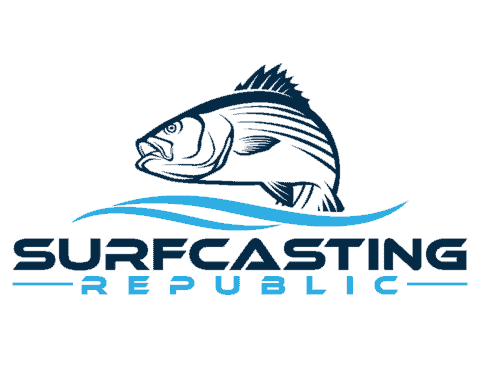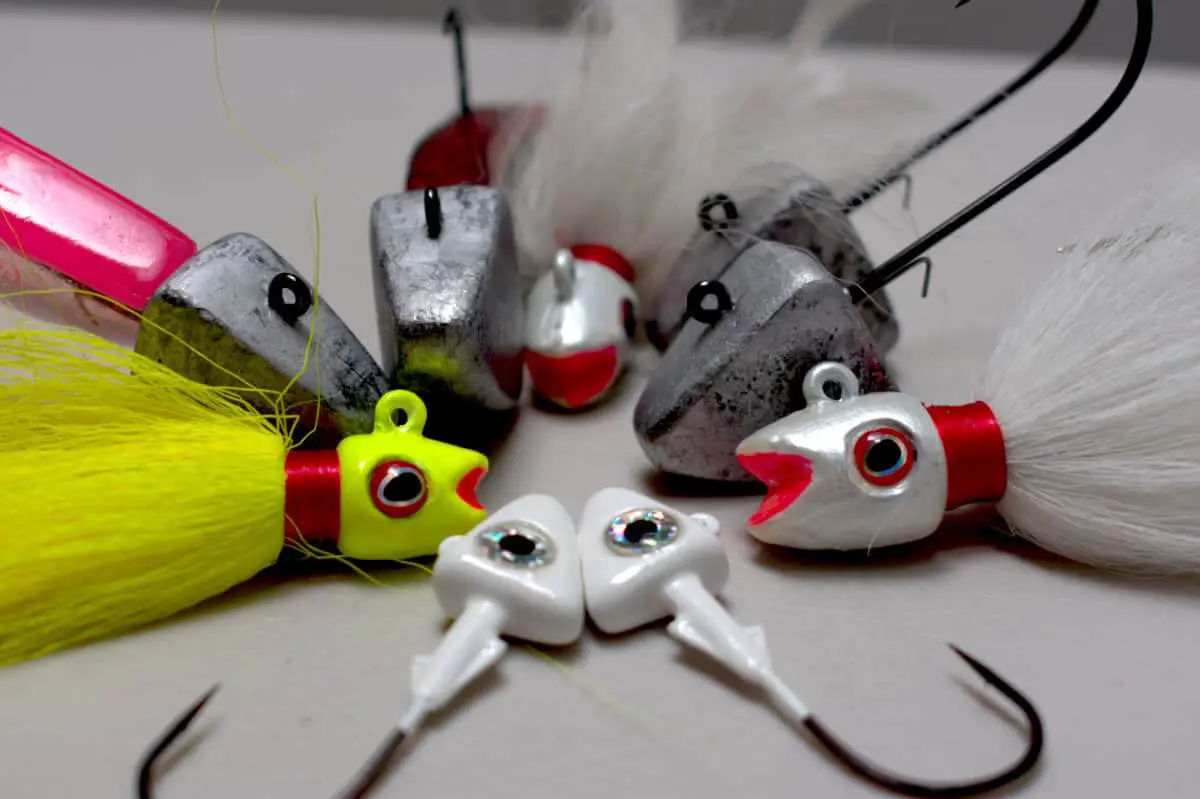Using a jig is an excellent way to catch fish. But there are so many different types and kinds of jig heads that it can be mind-numbing for anyone new to fishing with a jig. And when it comes to surf fishing with a jig, things don’t really get a lot easier.
When I first started using jig heads, I wasn’t really able to find a lot of information on what jig heads I should use. After a bunch of trial and error, I want to share with you my findings, and hopefully, you won’t make the same mistakes I did. Here is the short and sweet answer.
What size jig head for surf fishing? The right jig head size will depend on what fish species you are after and what the water and surf conditions are. For calm water, a 3/4 to 1 oz jig head is best, and for rougher conditions, a 1 1/2 to 2 oz jig head is preferable.
A lot of people are getting into jig fishing lately, and that kind of fishing is perfect for both beginners and advanced anglers.
There are also a lot of little caveats and details that are making choosing the right size jig head a little tricky. If you want to know more read on, as I get into the different aspects of jig head sizes and their use.
Is a Jig Head Good for Surf Fishing?
Jig heads are a lot of fun and can be a very neat way of catching a lot of fish. The simplest way to explain what a jig head is to describe it as a weighted hook.
Jigheads have many different uses and purposes. Generally speaking, there are two types of jig heads:
1. A Belly Weighted Jig Head
The belly weighted jig heads are used in places with shallow water and lots of cover and vegetation.
They have the weight placed on the shaft (or the belly) of the hook.
Frequently they are referred to as weedless jig heads because the tip of the hook sits near the lure. The true weedless jig heads have a little wire which protects the tip of the hook from getting stuck into the different weeds and structure.
Using the right size of the lure and hook is vital to provide enough clearance between the hook and the lure.
The belly weighted jig heads usually lack in hook up ratios and are not suitable for deep water fishing.
2. A Front Weighted Jig Head
The unique thing about jig heads is that the weight is at the front where the fishing line connects to the hook.
Jig heads are easy to rig and use. Their unique design allows them to present the bait in a very natural and alluring way to the fish.
They are used for a Deepwater application. With the hook sticking out of the lure, they will provide you with a lot better hook up ratios. However, the downside is that they are not suitable for use in tight cover.
They are usually more substantial than the belly weighted jig heads, which makes them dive to the bottom a lot quicker.
What Is the Right Size Jig Head for Surf Fishing?
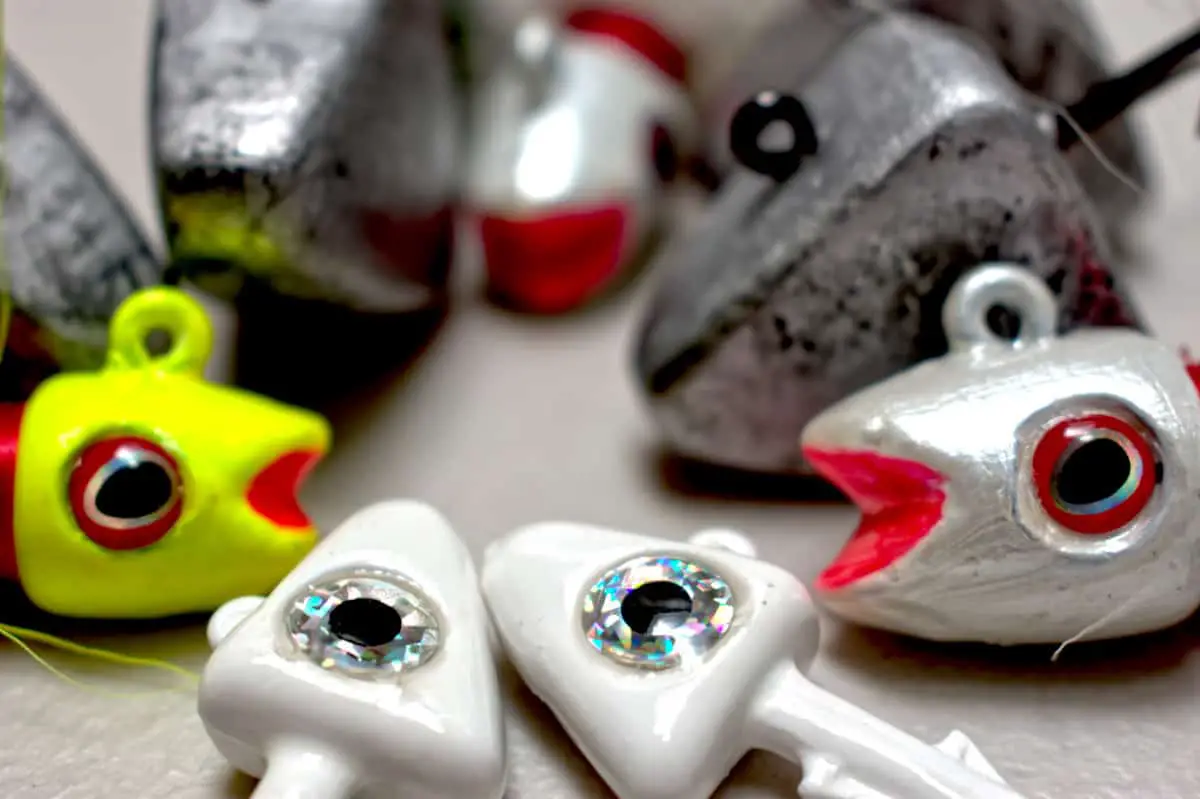
One of the essential things about surf fishing with a jig head is not the color but the size and the type of the hook and weight.
1. The Weight of the Jig Head
The weight of the jig bait is usually made from lead or tungsten. The lead is more commonly used and cheaper, but tungsten is denser, environment-friendly, and it can pack more weight in a smaller package.
The right weight you will need to use will depend mostly on how strong the water current is. You don’t want the lure to be carried away from where the fish is by the current.
That means that you may end up needing a variety of differently weighted jig heads, so make sure to have a few differently sized jigs and always experiment.
For low current and low surf conditions, a 1/2 to 3/4 oz jig head is what most anglers go for. And if the conditions are a bit rougher and there is a lot of surf you may have to go with 1 1/2 to 2 oz.
What will work best is hard to determine since there is not going to be a one-size-fits-all jig head.
And here’s why.
Ultimately it all depends on your specific conditions. In some cases, you may need to use even a heavier 3 to 4 oz jig.
2. The Size of the Hook
The size of the hook that you will need will depend on what fish species you will be fishing for.
In other words, the bigger the fish species you are after, the bigger the bait you will need to use, and the bigger the bait, the bigger the size of the hook needs to be.
Let’s take a few examples of what hook sizes you need for the different weight and swimbait sizes:
| WEIGHT | HOOK SIZE | SWIMBAIT SIZE |
| 3/8 OZ | 3.0 | 5” |
| 1/2 OZ | 4.0 | 5″ |
| 3/4 OZ | 4.0 | 5″ |
| 1 OZ | 4.0 | 5″ & 6″ |
| 1 1/2 OZ | 6.0 | 5″ & 6″ |
| 2 OZ | 8.0 | 6″ |
| 3 OZ | 8.0 | 6″ |
It is recommended to have a good set with differently sized fishing hooks.
What you would want to have for surf fishing is hooks with sizes![]() starting from 3 to 8.
starting from 3 to 8.
3. The Shape of the Hook
Hooks with more extended shank size are perfect for fish that has sharp teeth (like mackerel) and is very likely to cut through the fishing line.
Additionally, depending on what lure you will be using, you may want to get a hook that has a larger gap. This is the length between the shank and the point of the hook.
Circle hooks are usually the best kind of hook the vast majority of anglers prefer to use.
What Size Jig Head Should I Use When Surf Fishing with a Spoon?
When selecting a jig head for surf fishing with a spoon, consider a 1/4 ounce for light surf conditions and a 1/2 ounce for heavier surf. For a complete surf fishing guide, factor in the current, wind, and target fish species to determine which size jig head will yield the best results.
What Baits Can You Use for Jig Head Surf Fishing?
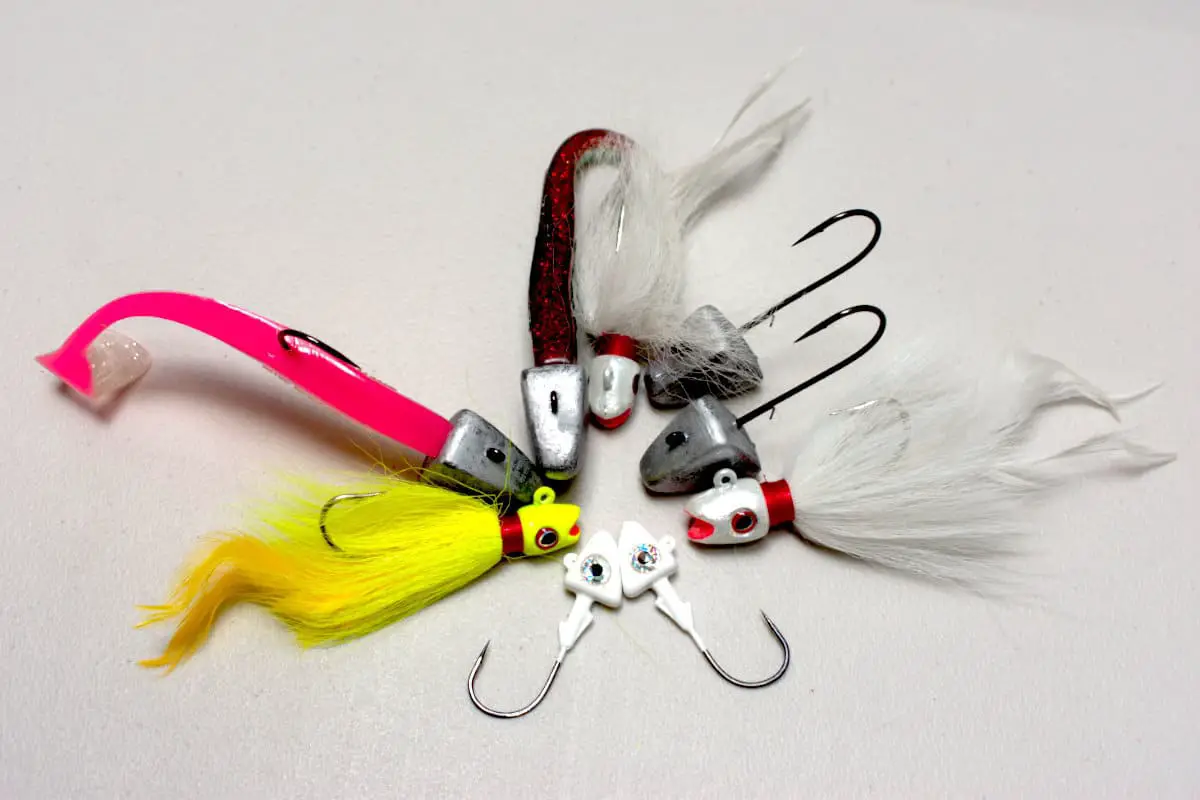
There are plenty of different baits that we can use on a jig head.
1. Soft Plastic Lures
A lot of anglers like using soft plastic lures as they provide good action, look very natural and can be used many times.
The size of the lure is essential in this case. The lure needs to be appropriately matched to the length of the hook. The longer the hook – the longer the lure.
The rule of thumb is that the jig head hook should come out near the middle of the lure.
Here’s why this is important.
If you use a long hook with a small lure, the hook will be coming out of the lure near the end of the body. This will severely limit and reduce the action of the lure.
And with a small jig head hook on a large lure, there is a big chance that when the fish strikes the lure, it will miss the hook.
2. Fresh Bait
Using life or cut bait is ideal for any predatory fish species. You can do very well with almost anything that you would typically use while surf fishing like:
- Squid;
- Cut fish bait;
- Shrimp;
- Clams, and so much more.
3. Bucktails
Bucktails![]() are a variation of the jig heads that are
excellent once you get a little more proficient with them.
are a variation of the jig heads that are
excellent once you get a little more proficient with them.
The hair on the back makes for an excellent underwater natural-looking presentation that will be very tempting for the fish.
It takes a little time to get used to fishing with a jig head, but frequently, once you get used to it, you may never want to look back.
Final Words on the Right Jig Head Size for Surf Fishing
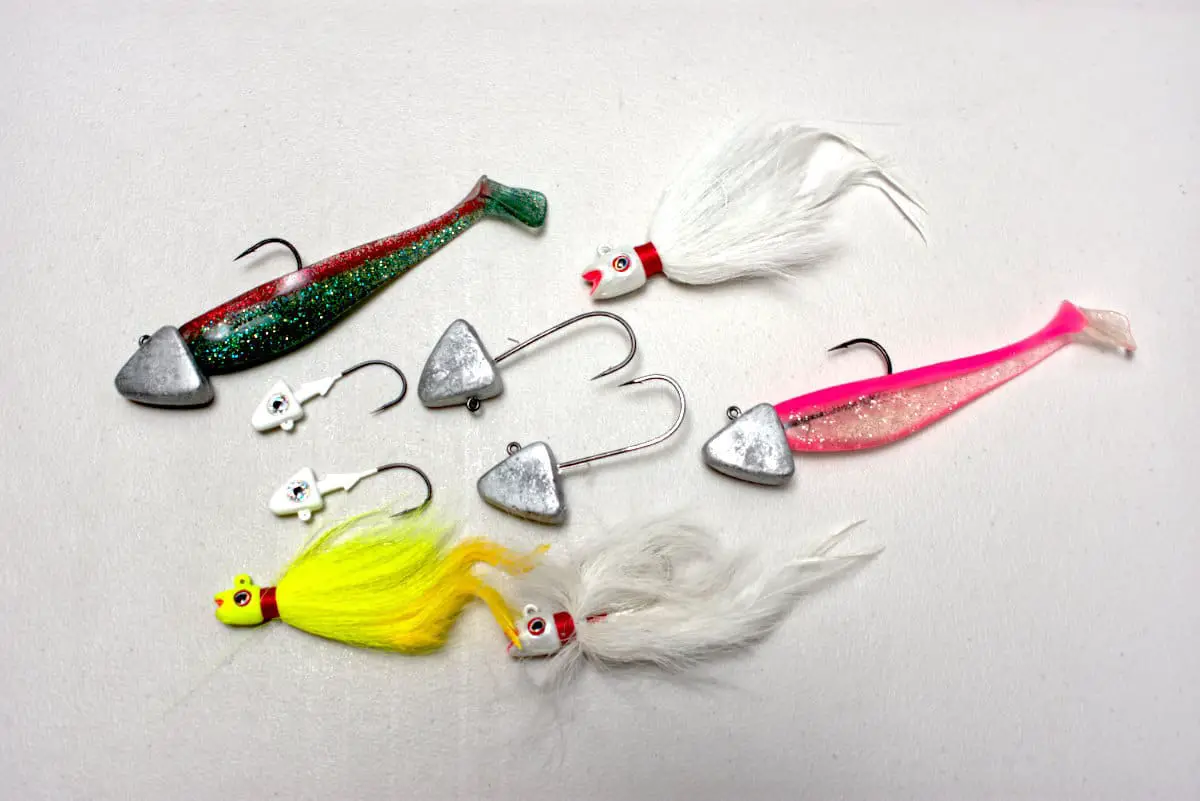
Choosing the right size jig head when surf fishing![]() is
essential, there is no doubt about that. And with so many different types,
styles, and designs of jig heads, choosing the size of a jig head can be a
challenging thing to do.
is
essential, there is no doubt about that. And with so many different types,
styles, and designs of jig heads, choosing the size of a jig head can be a
challenging thing to do.
Always make sure to bring yourself a selection of different jig heads so that you can adapt more freely to the specific conditions.
It is all about finding the right size given the current conditions you will be fishing in. You don’t want to have the jig head stuck to the bottom while you are retrieving it, and you don’t want it going too high either.
Something that I recommend for beginners is to start with a specific size of a jig head, usually a 1/2 to 1 oz to test the waters, so to speak. Check how it casts and whether or not you are feeling the bottom and adjust accordingly.
